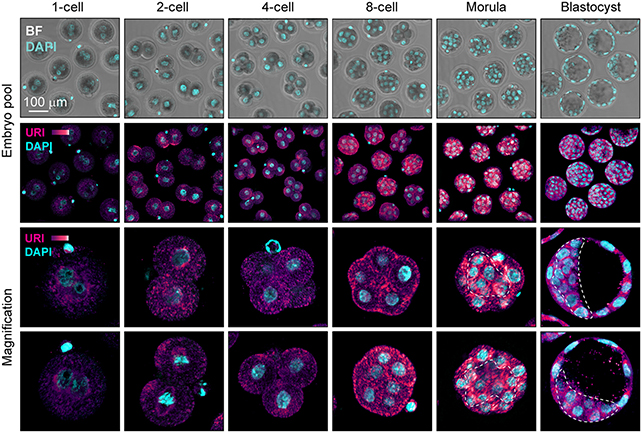A critical early stage of embryonic development has been linked to a virus that mixed with the ancestral DNA of complex organisms like ourselves more than 500 million years ago.
Genetic material from endogenous retroviruses – which infected the earliest organisms on Earth, leaving markers in our DNA – is estimated to make up around 8 to 10 percent of the modern human genome.
The newly discovered link between these viruses and embryo growth has implications for creating artificial embryos and working on regenerative medicines, according to researchers from the Spanish National Cancer Research Center (the Centro Nacional de Investigaciones Oncológicas, or CNIO).

"Until recently, these viral remnants were considered to be junk DNA, genetic material that was unusable or even harmful," says biologist Sergio de la Rosa, from CNIO.
"Intuitively, it was thought that having viruses in the genome could not be good."
Through a detailed study of mouse models, the team was able to identify a retroviral protein called MERVL-gag, which helps manage the pace of embryo development just a few hours after fertilization.
The key development in question is when the first few totipotent cells (capable of becoming any of the cells that form the entire organism) give rise to pluripotent cells (capable of becoming cells that form any tissues of the body, but not placental tissue).
This gradual process of specialization in the embryo is what turns a blob of cells into either a cat, a sea cucumber, an earthworm, or a human being, and the researchers showed how MERVL-gag influences a gene called URI – thought to be essential in enabling molecules to become pluripotent.
"It is a totally new role for endogenous retroviruses," says Djouder. "We discovered a new mechanism that explains how an endogenous retrovirus directly controls pluripotency factors."
The team found high levels of expression of the MERVL-gag protein in the early totipotency phase of embryo growth, with these levels then steadily decreasing as URI becomes more influential on the behavior of cells.
What we're seeing here is a careful balance between proteins, genes, and pluripotency, the result of hundreds of millions of years of evolution, and none of it would be possible without an ancient virus.
This step in the process from the first few cells to an actual living animal is hugely important in successfully developing artificial embryos too, research which helps in understanding problems that can affect pregnancy and fertility.
"We are starting to realize that these retroviruses, which have co-evolved with us over millions of years, have important functions, such as regulating other genes," says de la Rosa. "It's an extremely active field of research."
The research has been published in Science Advances.
